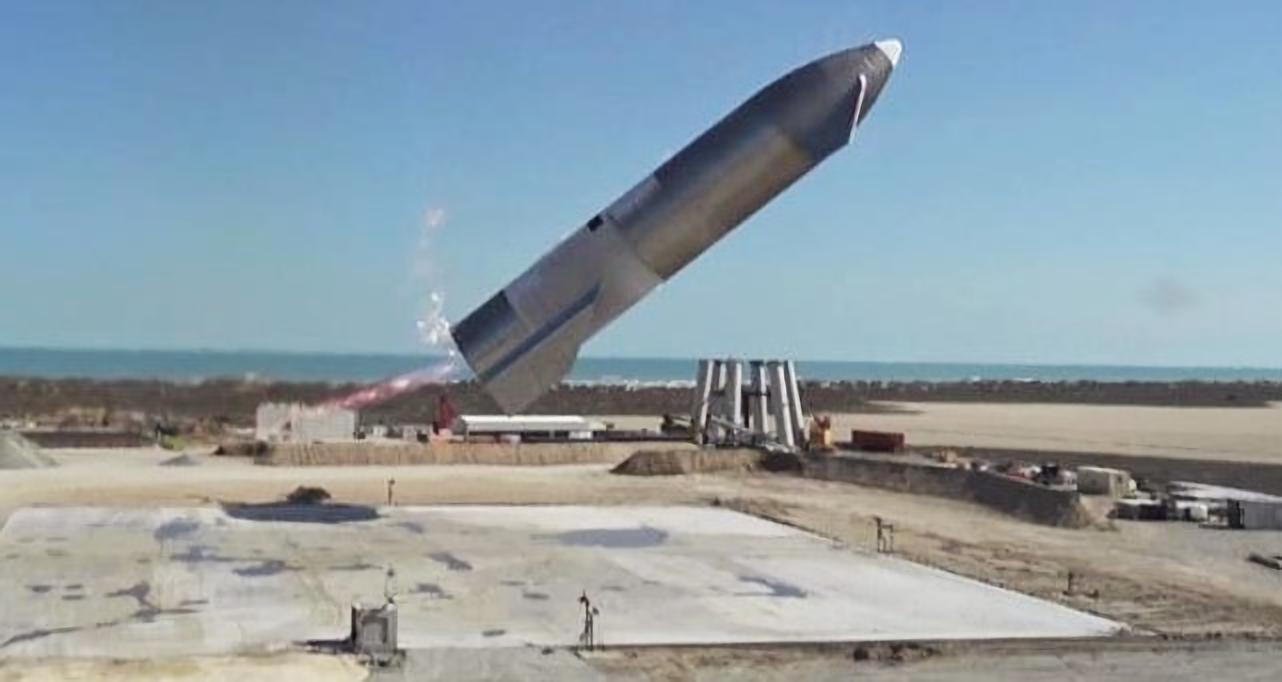
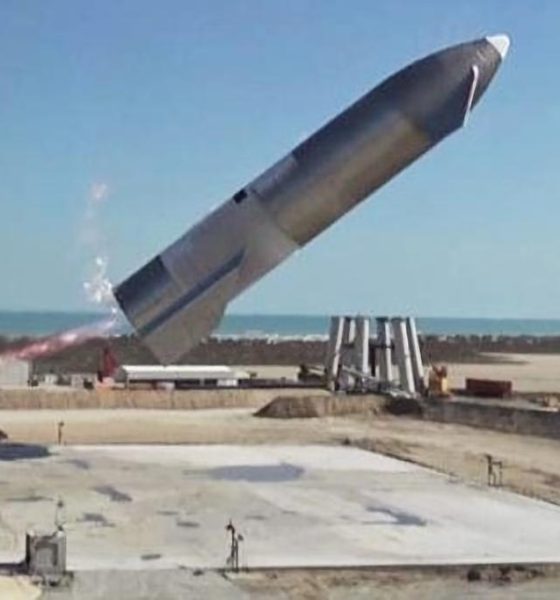
News
SpaceX CEO Elon Musk talks Starship explosion: “We were too dumb”
Two days after a last-second failure caused Starship SN9 to smash into the ground and explode, SpaceX CEO Elon Musk has returned to Twitter with some harsh preliminary reactions.
Right off the bat, in response to a question about why Starships SN8 and SN9 both attempted their unsuccessful landings with only two of three available Raptor engines, Musk frankly stated that “we were too dumb.” At face value, it’s a decent question, given that there are no obvious showstoppers to explain why Starships couldn’t make the most of the redundancy their three Raptor engines can offer.
After completing an otherwise flawless 6.5 minutes launch, ascent, and belly-flop descent, Starship SN9 began a critical ~120-degree flip maneuver, sequentially igniting two Raptor engines and using that thrust to flip from a belly-down attitude to a tail-first landing configuration. Unfortunately, though the first Raptor did fire up and put in a good effort, the second engine failed to ignite, leaving the building-sized rocket to impact the ground traveling far too quickly.
Ironically, more than three years ago, Musk himself revealed in a Reddit Ask Me Anything thread that he and his engineers had decided to modify Starship’s (then known as BFS) design by adding a third Raptor to its central cluster of two engines.
“Btw, we modified the [Starship] design since IAC [2017] to add a third medium-area-ratio Raptor engine partly for that reason (lose only 1/3 thrust in engine out) and allow landings with higher payload mass for the Earth to Earth transport function.”
Elon Musk – Reddit AMA – October 2017
Primarily meant to enable more efficient landings in Earth’s atmosphere, adding a third engine to that cluster would logically increase the chances of a successful (or at least survivable) landing in the event that one engine fails. Greater thrust and an improved thrust-to-weight ratio both during launch and landing would fundamentally improve the efficiency of Starship, likely making up for most or all of the added weight.
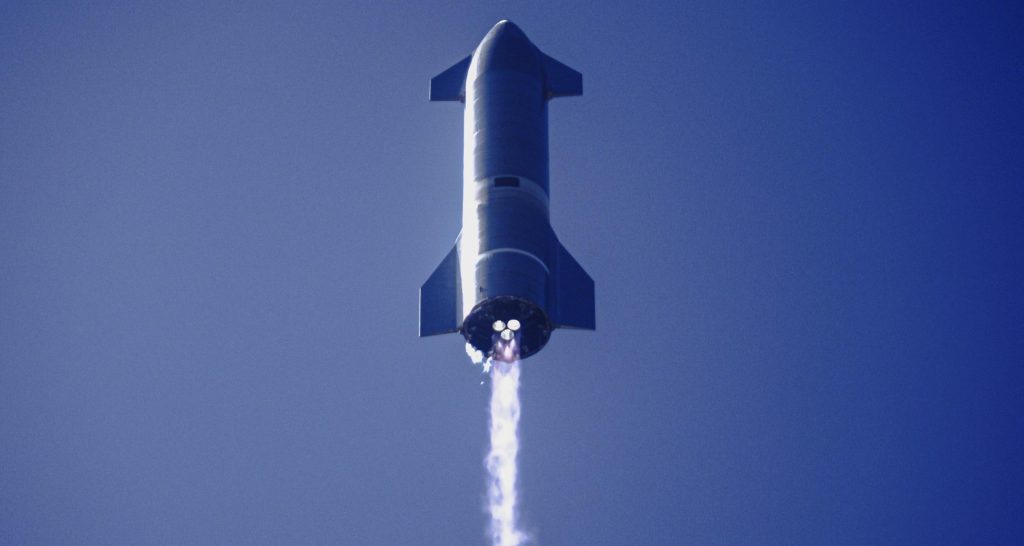
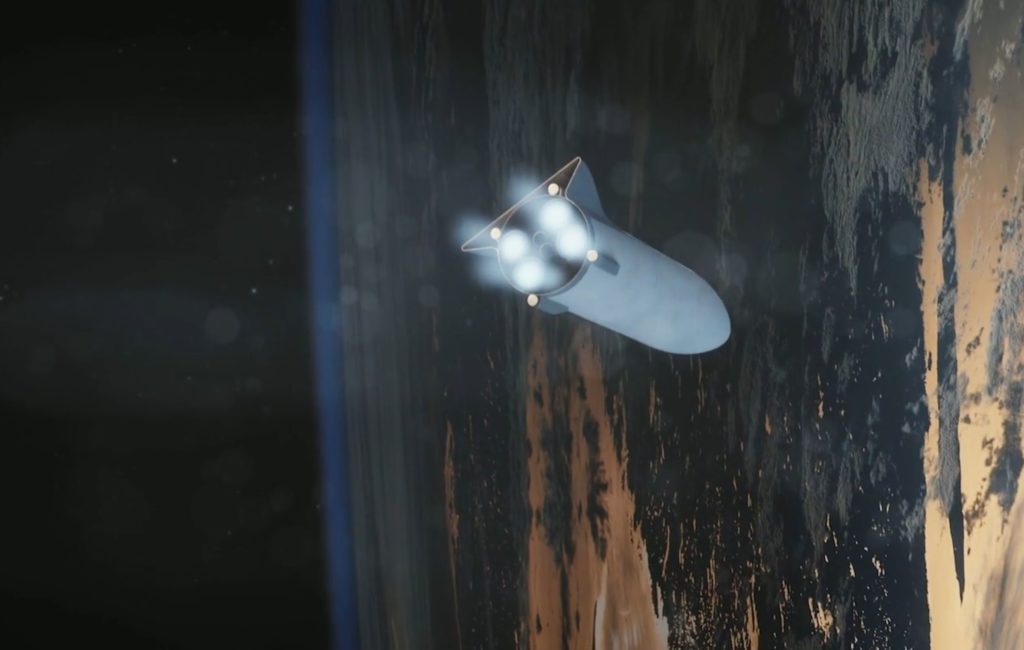
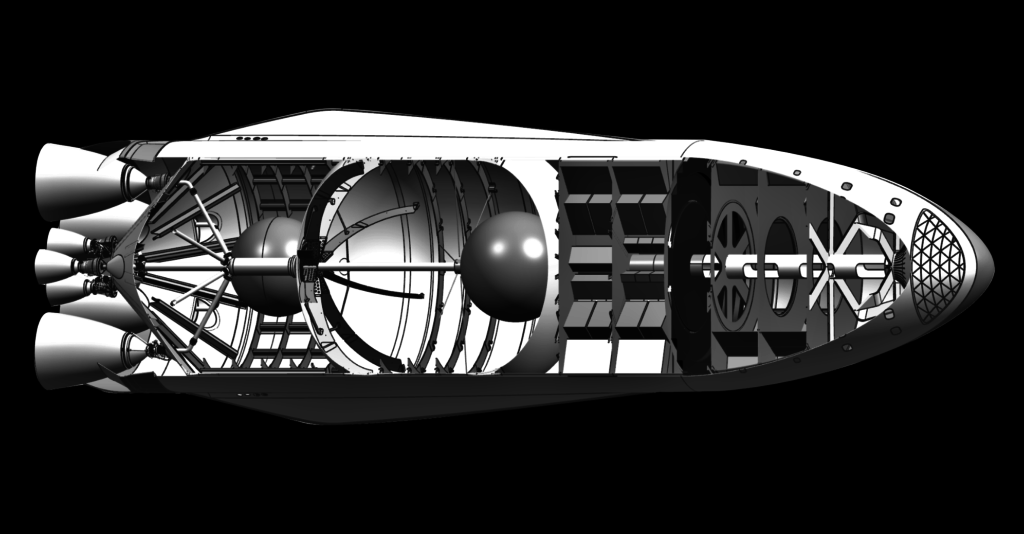
In retrospect, it’s not entirely surprising to learn that a three-engine landing burn is probably the most logical option if three landing-class engines have been included in the design. In SpaceX and Musk’s defense, however, there are also several good reasons to use as few Raptor engines as possible.
It was foolish of us not to start 3 engines & immediately shut down 1, as 2 are needed to land— Elon Musk (@elonmusk) February 4, 2021
Throttling high-performance rocket engines is exceptionally difficult and Raptor is not yet a fully mature engine, meaning that it’s throttle capabilities are likely less than optimal. That’s relevant because the higher a rocket’s thrust-to-weight ratio during landing, the more aggressive its landings have to be. SpaceX is apparently extremely conservative with Starship in this regard, prioritizing slow, gentle landings by only using two of three available engines.
Ironically, it’s possible that that attempt at risk reduction resulted in harder landings for both Starship SN8 and SN9, as three-engine landing burns could have potentially slowed them down significantly more before impact.
At the same time, though it may have mitigated the severity of both landing failures, three-engine landing burns would not have resolved the fundamental issues that caused them. In SN8’s case, low fuel header tank pressure doomed the Starship, while SN9 is more ambiguous. Aside from the clear Raptor ignition failure, which a three-engine burn could have resolved by downselecting to two healthier engines, the one Raptor that did ignite appeared to suffer some kind of uncontained failure seconds before landing.
Impressively, despite that apparent combustion chamber or preburner failure, the engine’s landing burn seemed to continued uninterrupted until the moment of impact. As such, it’s hard to say if that lone Raptor was still producing substantial thrust or if it was in the throes of a catastrophic failure. If it could have held on for another 5-10 seconds and the third Raptor (the engine that didn’t reignite) was able to restart and perform without issue, a three-engine landing burn could have easily made SN9’s demise less violent or even have enabled a soft landing.
While a three-engine burn all the way to touchdown appears to be extremely risky or impossible for present-day Starships, Musk implied that there was nothing preventing SpaceX from reigniting all three engines during the initial flip and landing burn and using that time to determine the health of all three engines. If all three were healthy, Starship would shut down one for a soft landing. If one engine failed to restart or lost thrust shortly after ignition, the other two would already be active and able to take over.
Musk says that Starship SN10, already at the launch pad and likely days away from its first tests, will attempt to adopt that approach on an upcoming test flight expected as few as 2-3 weeks from now.

Elon Musk
Tesla’s Elon Musk: 10 billion miles needed for safe Unsupervised FSD
As per the CEO, roughly 10 billion miles of training data are required due to reality’s “super long tail of complexity.”

Tesla CEO Elon Musk has provided an updated estimate for the training data needed to achieve truly safe unsupervised Full Self-Driving (FSD).
As per the CEO, roughly 10 billion miles of training data are required due to reality’s “super long tail of complexity.”
10 billion miles of training data
Musk comment came as a reply to Apple and Rivian alum Paul Beisel, who posted an analysis on X about the gap between tech demonstrations and real-world products. In his post, Beisel highlighted Tesla’s data-driven lead in autonomy, and he also argued that it would not be easy for rivals to become a legitimate competitor to FSD quickly.
“The notion that someone can ‘catch up’ to this problem primarily through simulation and limited on-road exposure strikes me as deeply naive. This is not a demo problem. It is a scale, data, and iteration problem— and Tesla is already far, far down that road while others are just getting started,” Beisel wrote.
Musk responded to Beisel’s post, stating that “Roughly 10 billion miles of training data is needed to achieve safe unsupervised self-driving. Reality has a super long tail of complexity.” This is quite interesting considering that in his Master Plan Part Deux, Elon Musk estimated that worldwide regulatory approval for autonomous driving would require around 6 billion miles.
FSD’s total training miles
As 2025 came to a close, Tesla community members observed that FSD was already nearing 7 billion miles driven, with over 2.5 billion miles being from inner city roads. The 7-billion-mile mark was passed just a few days later. This suggests that Tesla is likely the company today with the most training data for its autonomous driving program.
The difficulties of achieving autonomy were referenced by Elon Musk recently, when he commented on Nvidia’s Alpamayo program. As per Musk, “they will find that it’s easy to get to 99% and then super hard to solve the long tail of the distribution.” These sentiments were echoed by Tesla VP for AI software Ashok Elluswamy, who also noted on X that “the long tail is sooo long, that most people can’t grasp it.”
News
Tesla earns top honors at MotorTrend’s SDV Innovator Awards
MotorTrend’s SDV Awards were presented during CES 2026 in Las Vegas.

Tesla emerged as one of the most recognized automakers at MotorTrend’s 2026 Software-Defined Vehicle (SDV) Innovator Awards.
As could be seen in a press release from the publication, two key Tesla employees were honored for their work on AI, autonomy, and vehicle software. MotorTrend’s SDV Awards were presented during CES 2026 in Las Vegas.
Tesla leaders and engineers recognized
The fourth annual SDV Innovator Awards celebrate pioneers and experts who are pushing the automotive industry deeper into software-driven development. Among the most notable honorees for this year was Ashok Elluswamy, Tesla’s Vice President of AI Software, who received a Pioneer Award for his role in advancing artificial intelligence and autonomy across the company’s vehicle lineup.
Tesla also secured recognition in the Expert category, with Lawson Fulton, a staff Autopilot machine learning engineer, honored for his contributions to Tesla’s driver-assistance and autonomous systems.
Tesla’s software-first strategy
While automakers like General Motors, Ford, and Rivian also received recognition, Tesla’s multiple awards stood out given the company’s outsized role in popularizing software-defined vehicles over the past decade. From frequent OTA updates to its data-driven approach to autonomy, Tesla has consistently treated vehicles as evolving software platforms rather than static products.
This has made Tesla’s vehicles very unique in their respective sectors, as they are arguably the only cars that objectively get better over time. This is especially true for vehicles that are loaded with the company’s Full Self-Driving system, which are getting progressively more intelligent and autonomous over time. The majority of Tesla’s updates to its vehicles are free as well, which is very much appreciated by customers worldwide.
Elon Musk
Judge clears path for Elon Musk’s OpenAI lawsuit to go before a jury
The decision maintains Musk’s claims that OpenAI’s shift toward a for-profit structure violated early assurances made to him as a co-founder.

A U.S. judge has ruled that Elon Musk’s lawsuit accusing OpenAI of abandoning its founding nonprofit mission can proceed to a jury trial.
The decision maintains Musk’s claims that OpenAI’s shift toward a for-profit structure violated early assurances made to him as a co-founder. These claims are directly opposed by OpenAI.
Judge says disputed facts warrant a trial
At a hearing in Oakland, U.S. District Judge Yvonne Gonzalez Rogers stated that there was “plenty of evidence” suggesting that OpenAI leaders had promised that the organization’s original nonprofit structure would be maintained. She ruled that those disputed facts should be evaluated by a jury at a trial in March rather than decided by the court at this stage, as noted in a Reuters report.
Musk helped co-found OpenAI in 2015 but left the organization in 2018. In his lawsuit, he argued that he contributed roughly $38 million, or about 60% of OpenAI’s early funding, based on assurances that the company would remain a nonprofit dedicated to the public benefit. He is seeking unspecified monetary damages tied to what he describes as “ill-gotten gains.”
OpenAI, however, has repeatedly rejected Musk’s allegations. The company has stated that Musk’s claims were baseless and part of a pattern of harassment.
Rivalries and Microsoft ties
The case unfolds against the backdrop of intensifying competition in generative artificial intelligence. Musk now runs xAI, whose Grok chatbot competes directly with OpenAI’s flagship ChatGPT. OpenAI has argued that Musk is a frustrated commercial rival who is simply attempting to slow down a market leader.
The lawsuit also names Microsoft as a defendant, citing its multibillion-dollar partnerships with OpenAI. Microsoft has urged the court to dismiss the claims against it, arguing there is no evidence it aided or abetted any alleged misconduct. Lawyers for OpenAI have also pushed for the case to be thrown out, claiming that Musk failed to show sufficient factual basis for claims such as fraud and breach of contract.
Judge Gonzalez Rogers, however, declined to end the case at this stage, noting that a jury would also need to consider whether Musk filed the lawsuit within the applicable statute of limitations. Still, the dispute between Elon Musk and OpenAI is now headed for a high-profile jury trial in the coming months.








